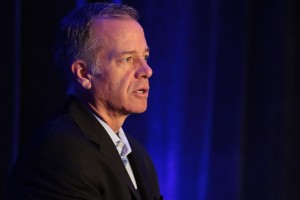
- PE overweight tied to higher 2005-2008 pacing
- Oregon CIO: State not ready to lead co-invest deals
- State added 2 PE staffers in ’18, plans to add another
Oregon Investment Council approved a private equity pacing target of $2.5 billion to $3.5 billion for 2019 and plans to use co-investment to reduce fees in its PE portfolio.
Oregon’s 22.1 percent PE allocation is already over its 17.5 percent target, but the pension plans to maintain the same pacing target as last year, with 10 to 15 commitments of $100 million to $500 million each.
Oregon PE head Michael Langdon said the overweight results largely from increased commitments during the 2005 to 2008 vintage years, which have been slower to liquidate than expected.
“The oldest investments in the portfolio continue to return cash even slower than our most conservative assumptions,” Langdon said at the meeting. “What you see there is an anomaly and will even itself out. It doesn’t change the plan.”
The 2005 to 2008 vintage years also have created the largest drag on Oregon’s PE returns over the past 20 years.
The concentration in those vintage years happened as a result of ramping up Oregon’s PE exposure quickly before the financial crash. Keeping a steady pace now can help prevent that kind of concentration risk from recurring, he added.
“Volatile pacing, whether you mean to do it or not, amounts to market timing,” Langdon said. “We don’t want to be on the wrong side of market timing again. … The better approach would have been to phase in that new allocation in a more gradual manner.”
To illustrate the risk of volatile pacing, Langon said Oregon’s 10-year PE returns would have improved by 200 basis points if it had simply committed half the amount of capital in the years 2005 to 2008.
Oregon committed $3 billion to 12 PE funds in 2018, while also building out its private equity team and embarking on a fee negotiation effort with PE managers.
Oregon hired two PE staffers in 2018 and plans to look for another in 2019, Langdon said.
In co-investment, Oregon is more focused on fee savings than leading deals, Langdon said.
“We’re not taking execution risk and we’re not taking concentration risk. We’re really just focused on trying to harvest those savings in a scalable and systematic manner over time,” Langdon said.
To support those goals, Oregon committed $250 million in December to Pathway Private Equity Fund C-III, which will manage systematic co-investment strategies.
The co-investment program can scale up or down alongside the large fund commitments that Oregon is making, giving investment staff more control over pacing as well, Langdon added.
Oregon CIO John Skjervem said he would answer with an “emphatic no” a board question about Oregon’s ability and appetite to co-sponsor deals at a higher level.
Blackstone Group’s global head of private equity, Joseph Baratta, who spoke earlier at the meeting, offered a different take:
“Oregon is certainly of the size to be a co-sponsor, writing a $300 [million] to $500 million commitment alongside us if that is the strategy you choose, and we can certainly accommodate any issues you’d have for other co-investments in the post-announcement syndication process.”
Action Item: More on Oregon’s PE portfolio: https://bit.ly/2Bfffyp


 If you do not receive this within five minutes, please try and sign in again. If the problem persists, please
email:
If you do not receive this within five minutes, please try and sign in again. If the problem persists, please
email: